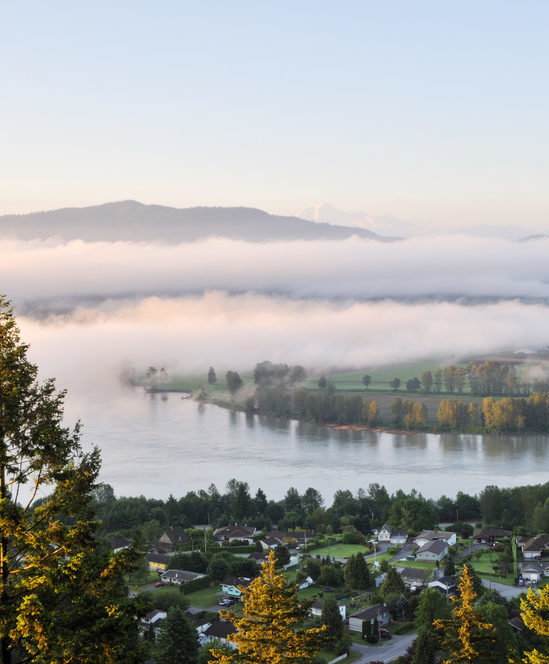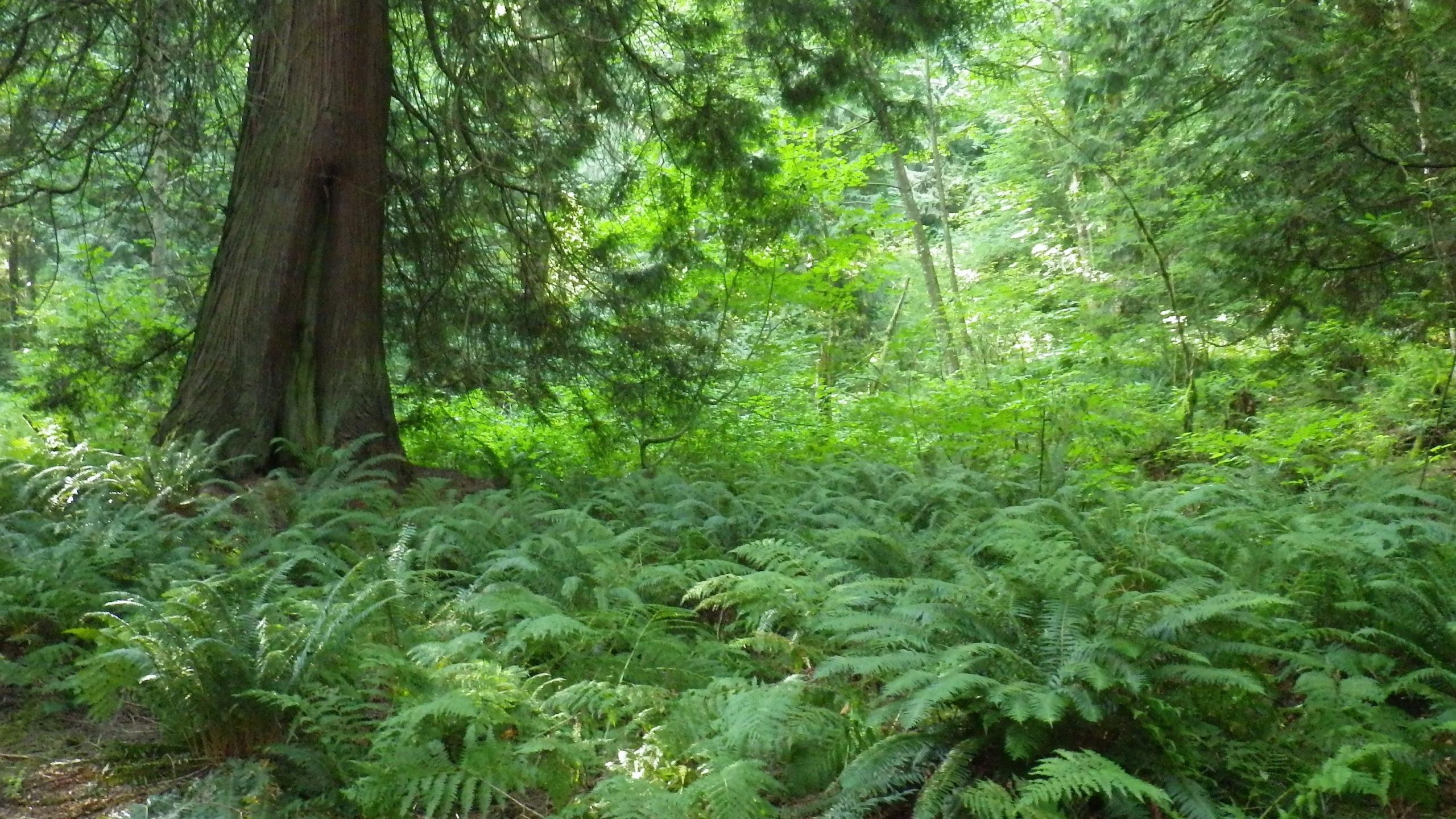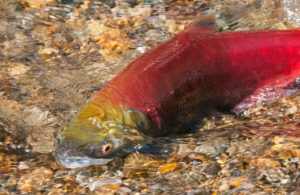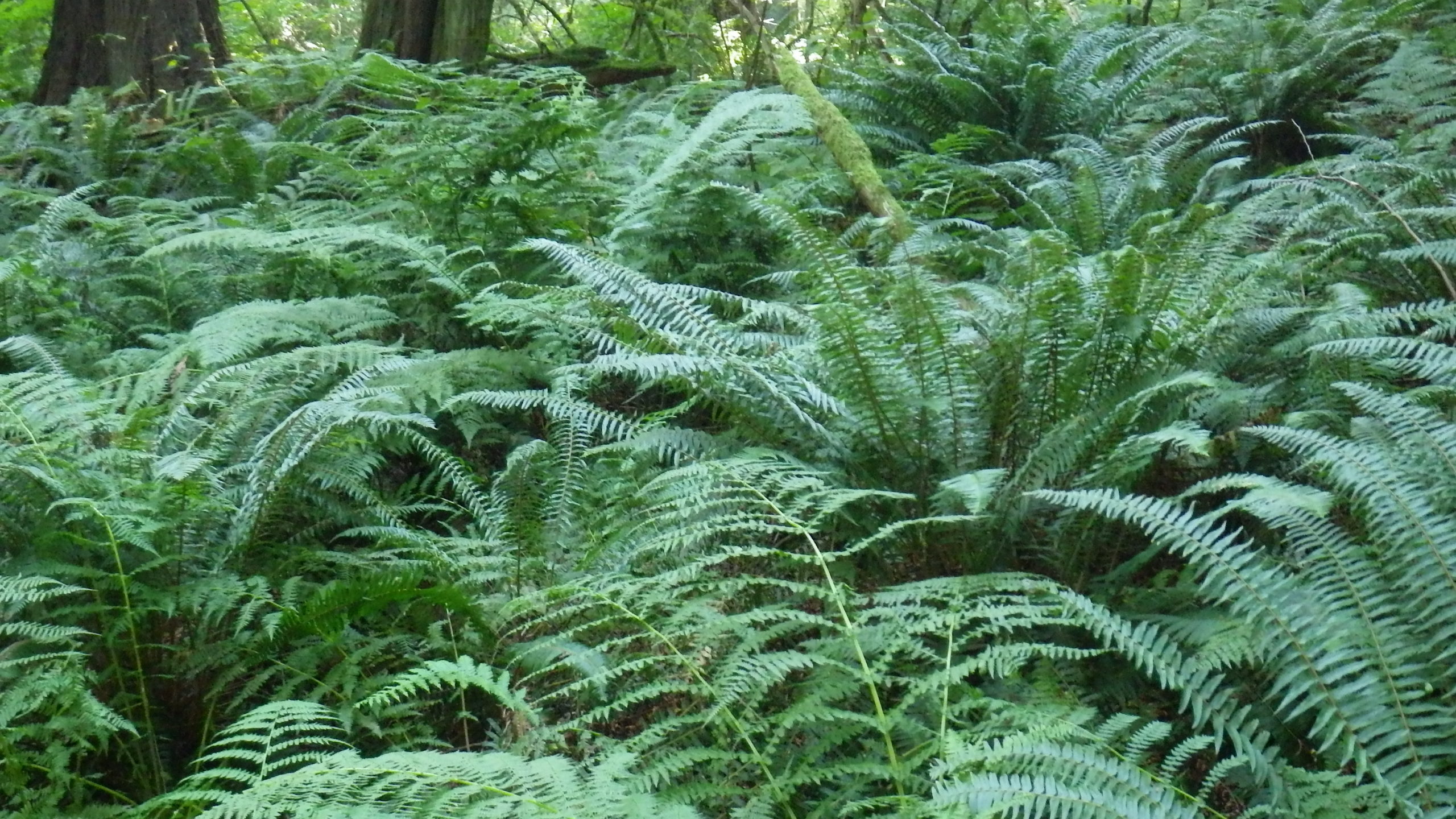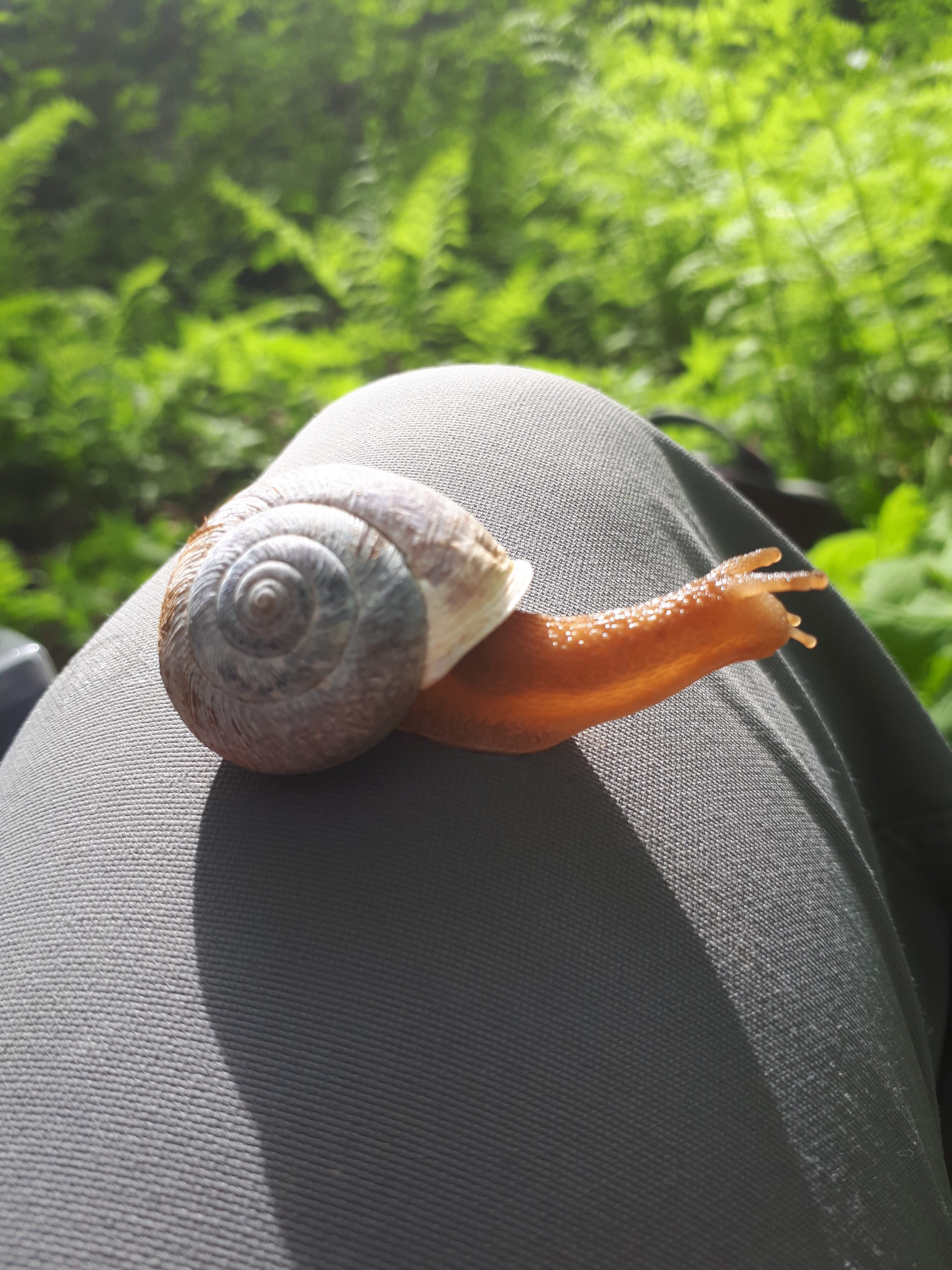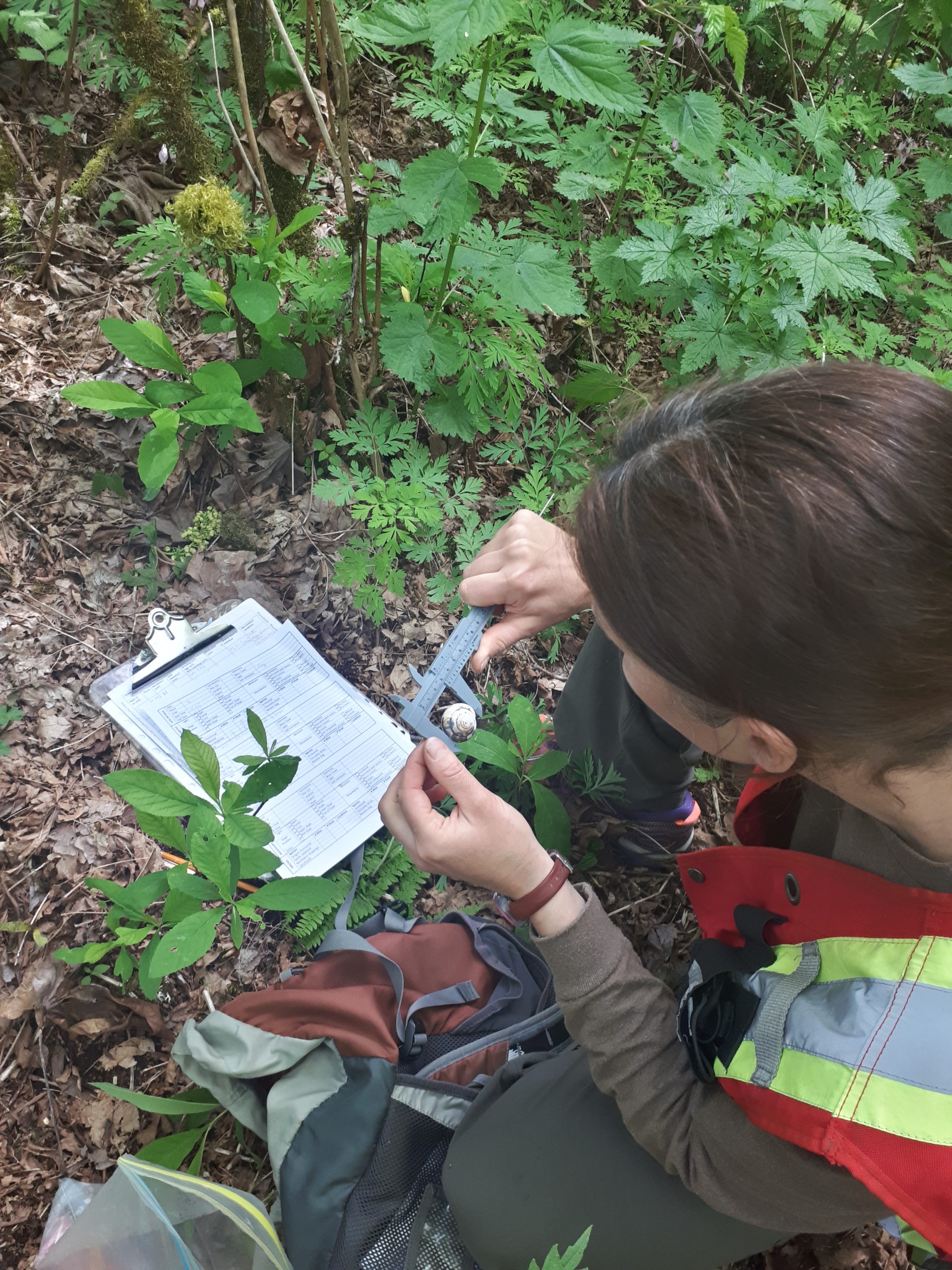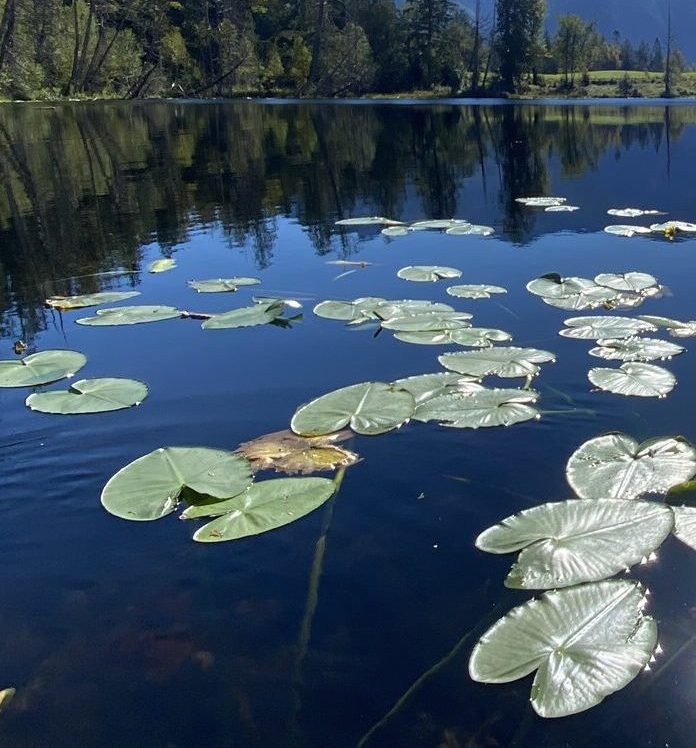Snail Nature Reserve
This is the first property protected by the Conservancy!
While it’s a small area, the well-established second-growth forest and moist soil provide important habitat for the endangered Oregon Forestsnail. It also flows to Fishtrap Creek. This is a vital watershed for salmonids and endangered fish species and drains south through farmland in both Canada and the United States, before entering the Pacific Ocean near Bellingham.
The Snail Nature Reserve’s intact forest habitat supports our other large native snail, the Pacific sideband. Black-tailed deer, coyotes, banana slugs, and songbirds also use the property. It may also be the home of other at-risk species such as Mountain Beaver and Red-legged Frogs.
The reserve’s ravines also connect with the large wetland complex below in the City of Abbotsford’s Simpson Park. The Snail Reserve is an important buffer zone between the wetland and the wildlife that live in the parkland to the south and the neighbouring industrial lands to the north.
